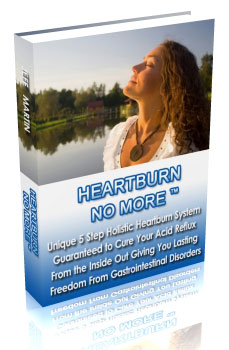If you've seen your doctor, he's probably diagnosed you with Acute Cholecystitis (an inflamed gallbladder, which is caused by gallstones forming inside that may have blocked one of the bile ducts). He's probably told you that the only solution is to have your gallbladder surgically removed. If he's told you that...
Your Doctor's "Solution" Is WRONG!
You Can Keep Your Gallbladder,
And Avoid Costly Surgery And Avoid Future Complications -- Possibly Even Bowel Cancer!
Before you even think about going through with this surgery, you need to know something that your doctor probably won't tell you: gallbladder surgery increases your risk of bowel cancer! Why? Without your gallbladder, bile will drip continuously into your digestive system! This constant dripping also causes diarrhea in some people. Removing the gallbladder may lead to higher blood cholesterol levels, too.
How & Why Do Gallstones Form?
Gallstones form when liquid stored in the gallbladder hardens into pieces of stone-like material. The liquid, called bile, is used to help the body digest fats. Bile is made in the liver, then stored in the gallbladder until the body needs to digest fat. At that time, the gallbladder contracts and pushes the bile into a tube--called the common bile duct--that carries it to the small intestine, where it helps with digestion.
Bile contains water, cholesterol, fats, bile salts, proteins, and bilirubin. Bile salts break up fat, and bilirubin gives bile and stool a yellowish color. If the liquid bile contains too much cholesterol, bile salts, or bilirubin, under certain conditions it can harden into stones.
The two types of gallstones are cholesterol stones and pigment stones. Cholesterol stones are usually yellow-green and are made primarily of hardened cholesterol. They account for about 80 percent of gallstones. Pigment stones are small, dark stones made of bilirubin. Gallstones can be as small as a grain of sand or as large as a golf ball. The gallbladder can develop just one large stone, hundreds of tiny stones, or almost any combination.
Gallstones can block the normal flow of bile if they lodge in any of the ducts that carry bile from the liver to the small intestine. That includes the hepatic ducts, which carry bile out of the liver; the cystic duct, which takes bile to and from the gallbladder; and the common bile duct, which takes bile from the cystic and hepatic ducts to the small intestine. Bile trapped in these ducts can cause inflammation in the gallbladder, the ducts, or, rarely, the liver. Other ducts open into the common bile duct, including the pancreatic duct, which carries digestive enzymes out of the pancreas. If a gallstone blocks the opening to that duct, digestive enzymes can become trapped in the pancreas and cause an extremely painful inflammation called gallstone pancreatitis.
If any of these ducts remain blocked for a significant period of time, severe--possibly fatal--damage or infections can occur, affecting the gallbladder, liver, or pancreas. Warning signs of a serious problem are fever, jaundice, and persistent pain.
So What Should You Do?
Try A Natural Alternative
and Keep Your Gallbladder!
Click below to find out more.

















































No comments:
Post a Comment